KHAO SOI NEUA/BEEF
KHAO SOI HAPPENS TO HAVE THE RIGHT BALANCE OF BOTH EXOTICISM AND SAFETY IN THE EYE OF A CAUTIOUSLY CURIOUS BACKPACKER.
Scad has been said about khao soi on the internet — some well-informed and some, not so much — so I think I will not bother. It’s possibly the most famous dish from Northern Thailand, a somehow debatable status in my view. Being back from a quick trip in Chiangmai Thailand, the capital of khao soi, I’m attempted to assume that its popularity among foreigners is contributed to its relatively benign characteristics if compared to the other more “adventurous” yet far more stunning dishes the region has to offer. Khao soi, being chicken or beef in coconut curry with egg noodles, happens to have the right balance of both exoticism and safety in the eye of a cautiously curious backpacker. It certainly isn’t, by far, the best thing we’ve tasted on this trip. But I’ve always wanted to formulate a khao soi recipe after I’ve actually tried it at its source, so here it is.
Pushing it further on its muslim Chinese origin, I’m replacing dried chilis with Sichuan douban chili paste for a more complexed flavor, as well as inviting the mild tinge of numbness and floral quality from Sichuan peppercorns. Another trick is to dial down on the amount of coconut milk in the broth itself so it can be reintroduced again right before serving, increasing depth and layers of flavors as how it is done in some of the better khao soi restaurants we’ve encountered. In a bit of a disagreement with the blunt, under-processed pickled mustard greens that are often mindlessly chopped and scattered in the noodle as a failing contrasting agent, I’m replacing it with pan-fried pickled caperberries that provides sharp pops of sourness and complexity. Then last but not least, a reminder of Sichuan peppercorns in the topical chili paste to bring it all together.
Enjoy.
Ingredients
- 6 small Asian shallots (140 grams after peeling), peeled
- 9 cloves of garlics (40 grams after peeling), peeled
- 2 tbsp (40 grams) Thai shrimp paste
- 2 tbsp (40 grams) Sichuan douban chili paste (see note *)
- 2 stalks (30 grams) lemongrass, finely chopped
- 3" (45 grams) galangal, finely chopped
- 1 1/2" (20 grams) ginger, peeled and chopped
- 1~2 tbsp Indian curry powder (see note **)
- 1 tbsp ground paprika
- 1 tbsp ground Sichuan peppercorns
- 1/2 tsp ground cumin
- 1/2 tsp ground black pepper
- 1.5 lbs (680 grams) boneless beef riblets (see note ***)
- 6 tbsp canola oil
- 1 cup (250 ml) coconut milk
- 5 cups low-sodium chicken stock
- 5 tbsp fish sauce
- 1 tbsp dark brown sugar
- 1/2 tsp white vinegar
- 1 jar of pickled caperberries
- 1/4 cup Thai or Sichuan chili flakes
- 1 tsp ground Sichuan peppercorns
- 2 tbsp canola oil
- Fresh flat Asian egg noodles (see note ****)
- Coconut cream or milk for drizzling
- Finely sliced Asian shallots
- Wedges of lime
- Fresh cilantro to garnish
Instructions
- MAKE THE CURRY BROTH: In a blender, add shallots, garlics, Thai shrimp paste and Sichuan douban chili paste. Start blending, adding 2~4 tbsp of water as needed in order to get a smooth puree. Then add lemongrass, galangal and ginger, and blend again until the mixture is very smooth and thick, set aside. In a small bowl, mix curry powder, ground paprika, ground Sichuan peppercorns, ground cumin and ground black pepper, set aside.
- Cut the boneless beef riblets into bite-size pieces. Heat a large pot over high heat with 6 tbsp of canola oil, then brown the beef in single-layer batches, making sure the beefs are deeply caramelized before transferring them with a tongs into another bowl. Leave all the oil inside the pot and turn the heat down to medium. Add the lemongrass-paste, stirring constantly, and cook for 8~9 minutes until all the moisture has evaporated and the paste starts to caramelize a little on the bottom of the pot (but not burnt!). Add the spice-mixture and cook for another minute, then return the beef back into the pot, along with coconut milk, chicken stock, fish sauce, dark brown sugar and white vinegar.
- Maintain the broth at a simmer over low heat and cover with a heavy lid, and cook for another 2 hours until the beefs are extremely tender and some oil has started to separate from the broth, floating on the surface. During cooking, when the liquid level has reduced too much, add more water to bring it back to the original level. I strongly recommend making the curry broth a day ahead of time, letting the flavor improve as it sits.
- PREPARE CONDIMENTS: Rinse the caperberries under water to remove excess brine, then pat dry. Coat a small skillet generously with canola oil and heat over medium heat. Add the caperberries along with a pinch of sugar (about 1/4 tsp for 6 berries) and cook until they start to caramelize a little on the edges. Remove from the skillet and oil, and set aside.
- Mix chili flakes, ground Sichuan peppercorns and 2 tbsp of canola oil in a small skillet and cook over medium heat, stirring constantly, until the chili flakes start to turn dark in color. Transfer into a bowl and set aside.
- TO ASSEMBLE: Add enough canola oil into a small frying pot until it reaches 2" deep. Heat the oil over medium-high heat until it bubbles up immediately around an inserted wooden chopstick. Break the fresh egg noodles up into small segments, then fry in small batches until golden browned and crispy. Drain well and set aside.
- Bring a large pot of water to boil and cook the un-fried egg nooldes until soft and cooked through, drain well and set aside. Bring the curry broth back to a simmer if needed.
- Divide the boiled egg noodles into serving bowls, and ladle the curry broth along with chunks of beefs into the bowl. The broth is acting more like a sauce then a soup, so I would say the ratio between noodle:broth is 1:1.5. Add 1 tbsp of coconut cream (or milk works, too) for a small bowl, 2 tbsp for larger bowl, plus a good handful of crispy egg noodles on top, a couple of fried caperberries, sliced shallots, a bit of cilantro, and serve with wedges of lime and toasted chili flakes on the side.
Notes
* Instead of dried chilis for the paste, I'm using fermented Sichuan douban chili paste for a more complexed flavor. If you don't have it, you can replace it with 2 tbsp of Thai chili flakes or even Mexican chili powder.
** Some khao soi has a strong Indian curry presence, and others, not so much. Depending on your preference, you can adjust it between 1 ~2 tbsp as you go.
*** Boneless beef riblet is the strip of meat in between the rib cage. It's usually very affordable, fatty and flavorful, perfect for this application. If you can't find it, you can also use short ribs or chuck.
**** Outside the consideration for authenticity, I'm usually not a big fan of Asian egg noodles, which have a snappy texture and alkaline taste. But since it's the go-to choice for khao soi, that's what I'm using here. If you can't find it, feel free to substitute it with other types of fresh, thin, wheat noodles available to you.


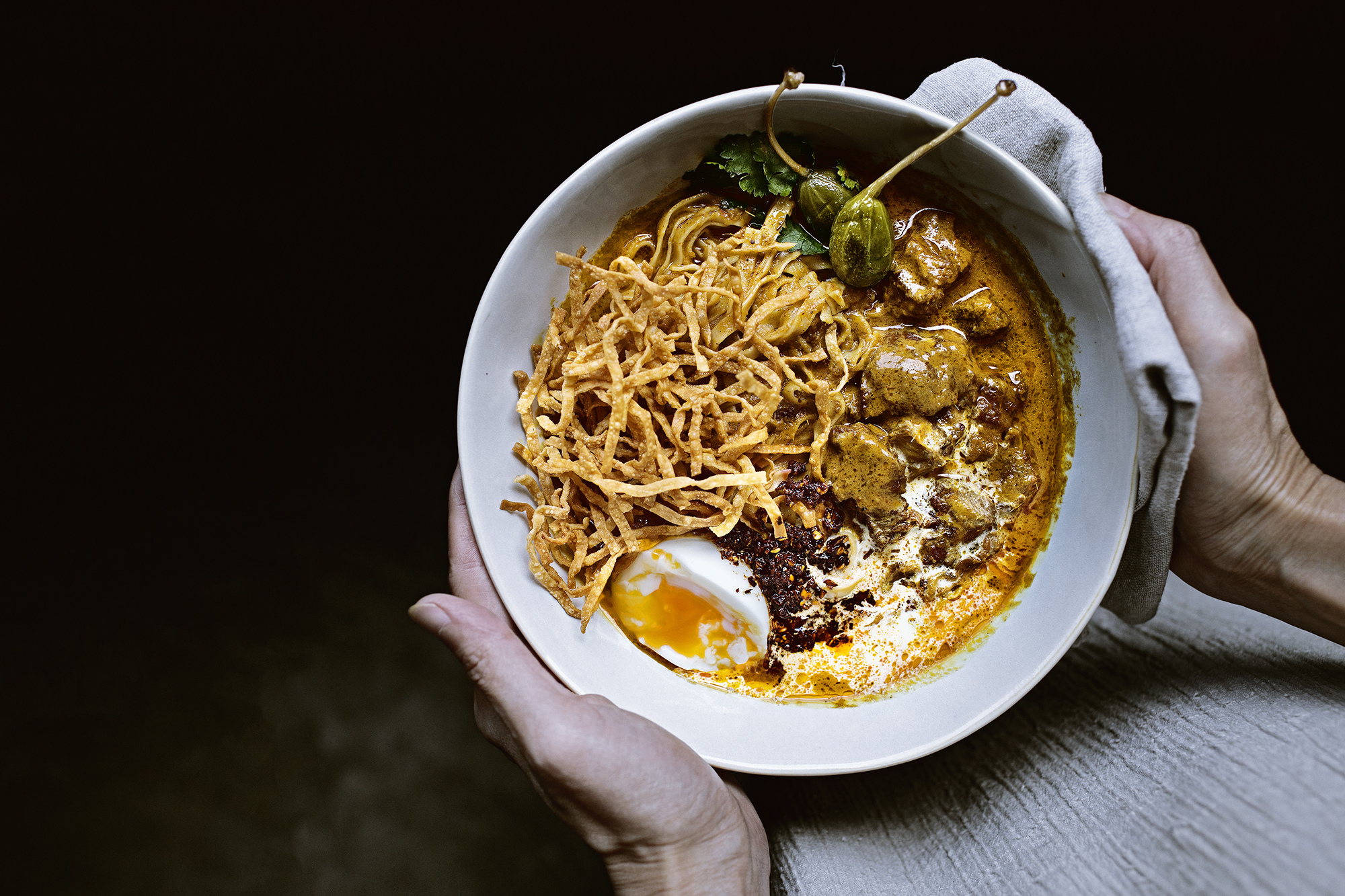

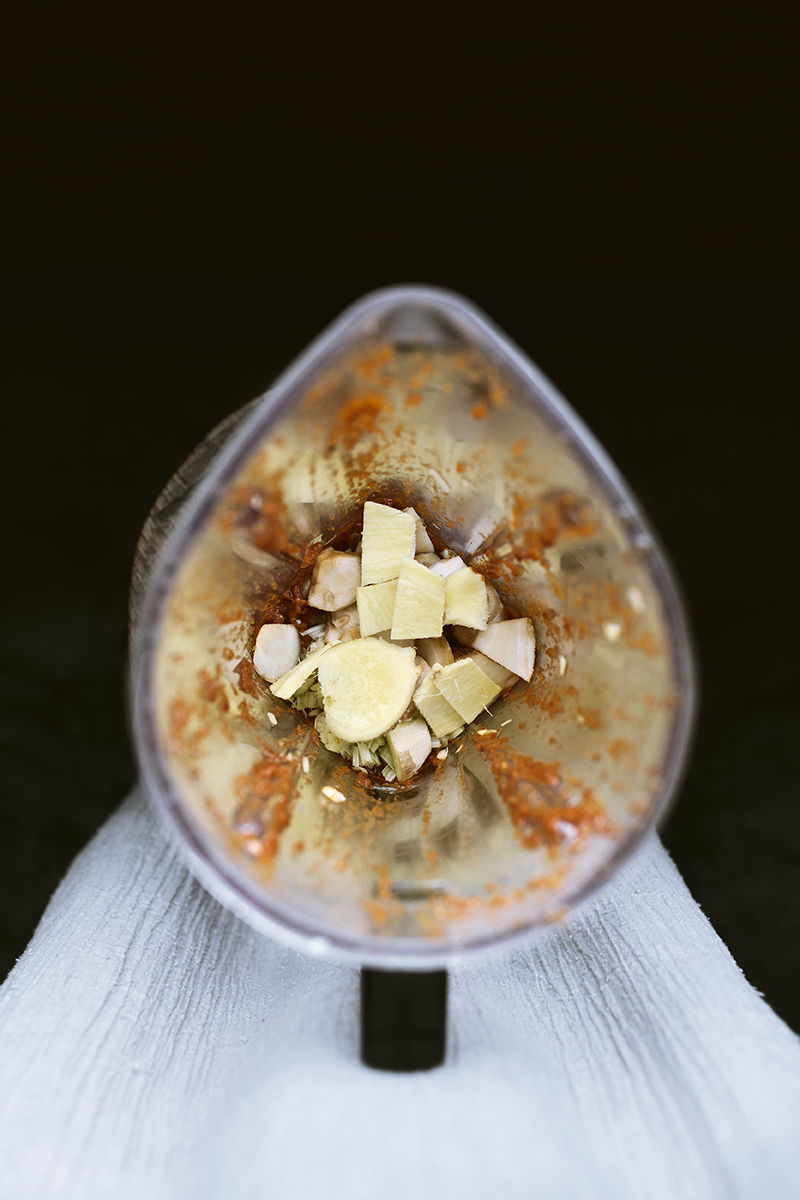
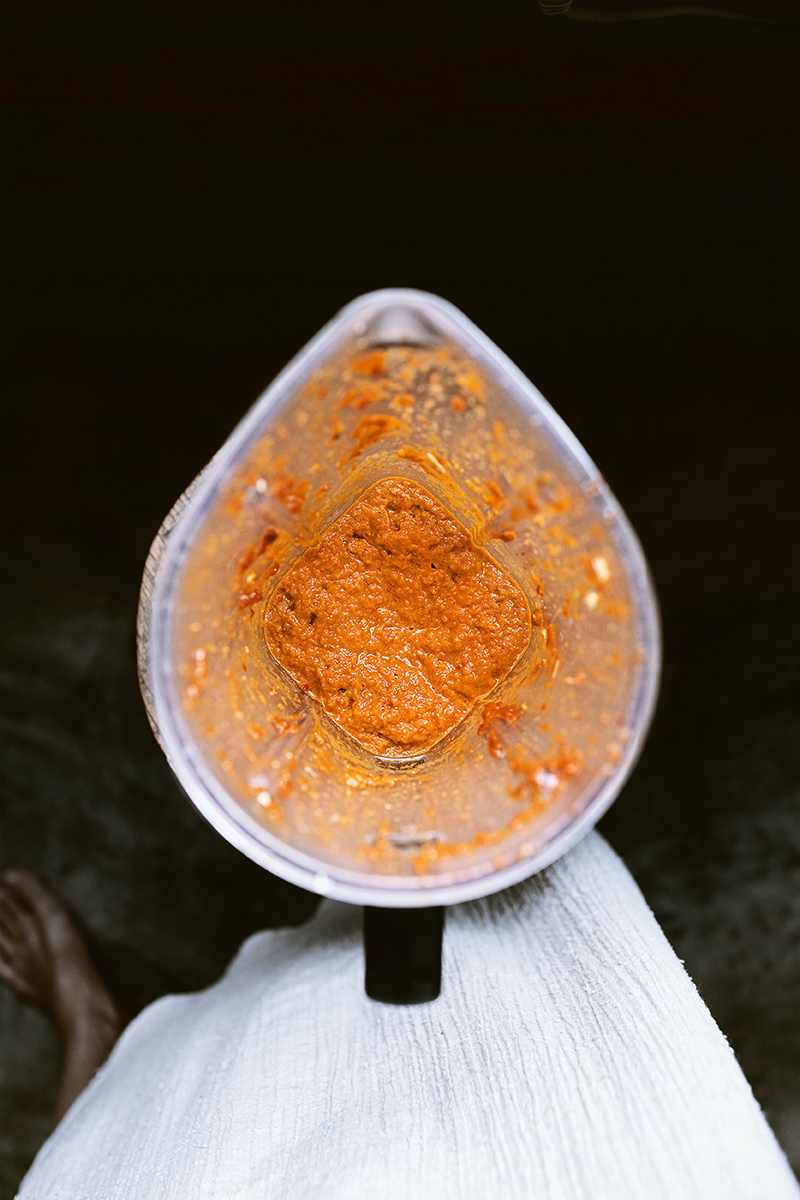
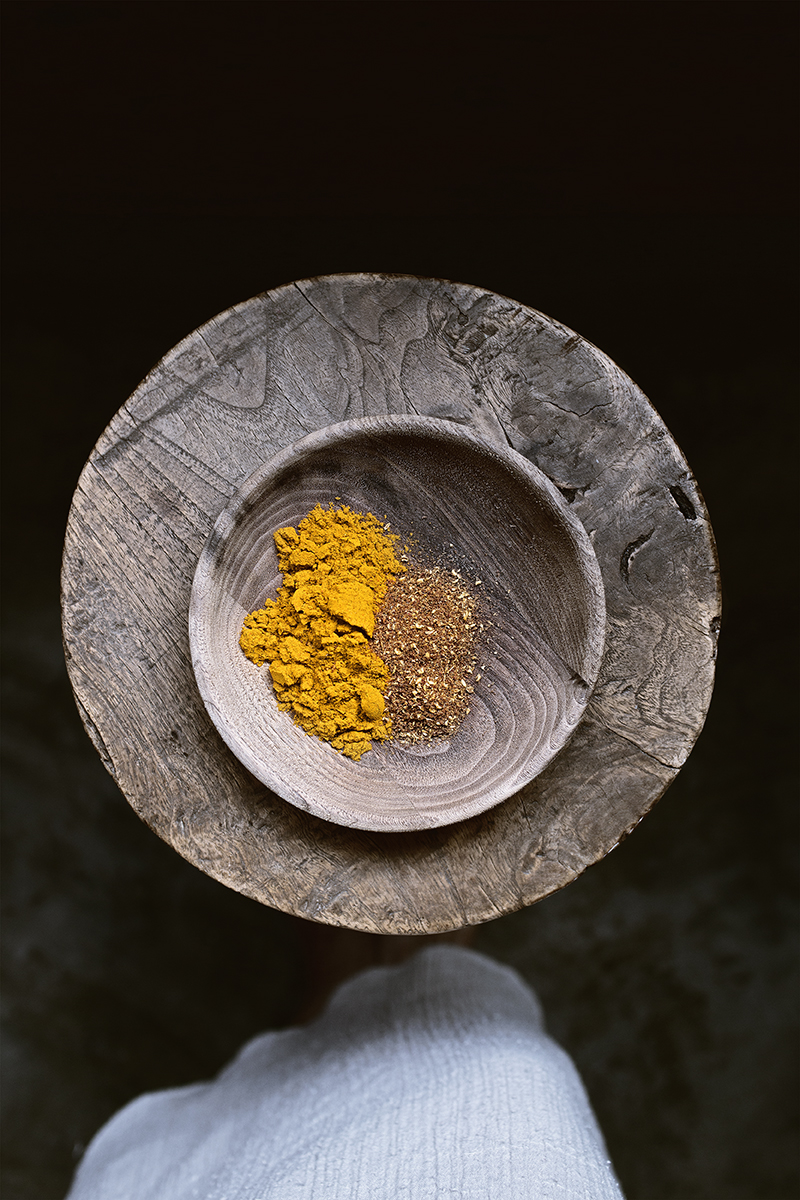

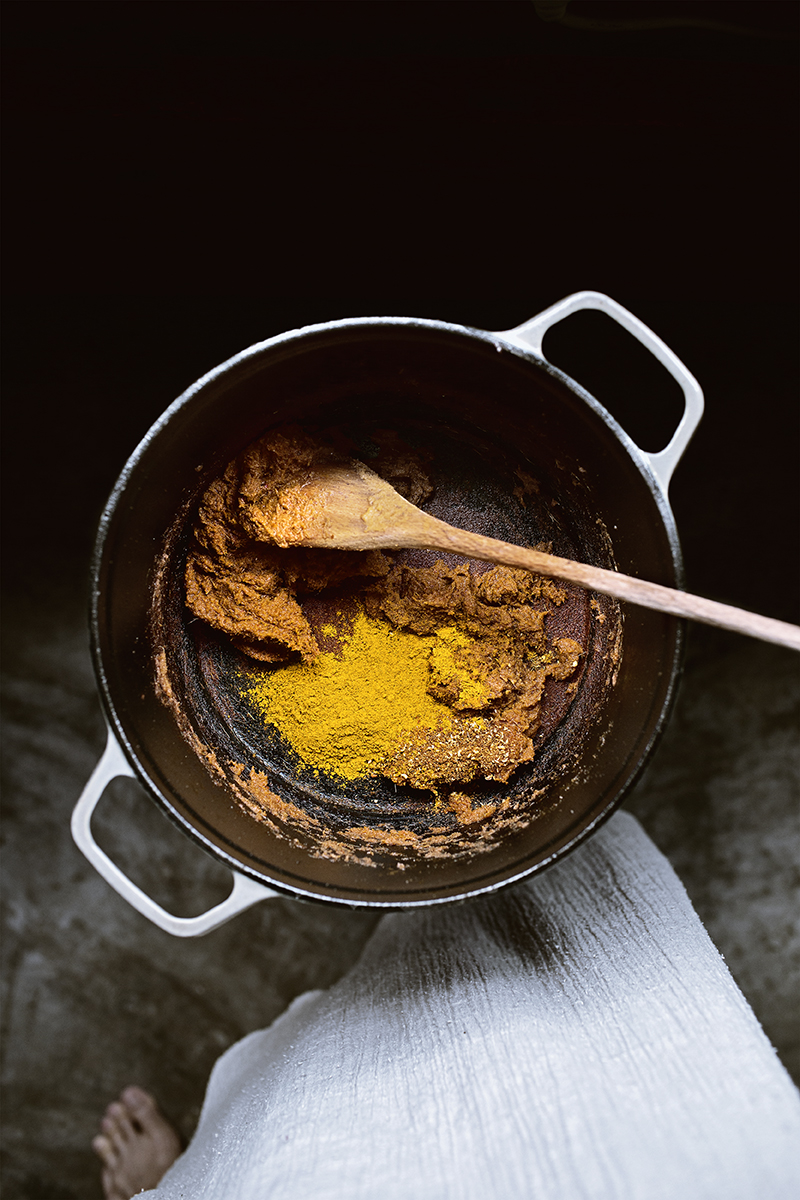
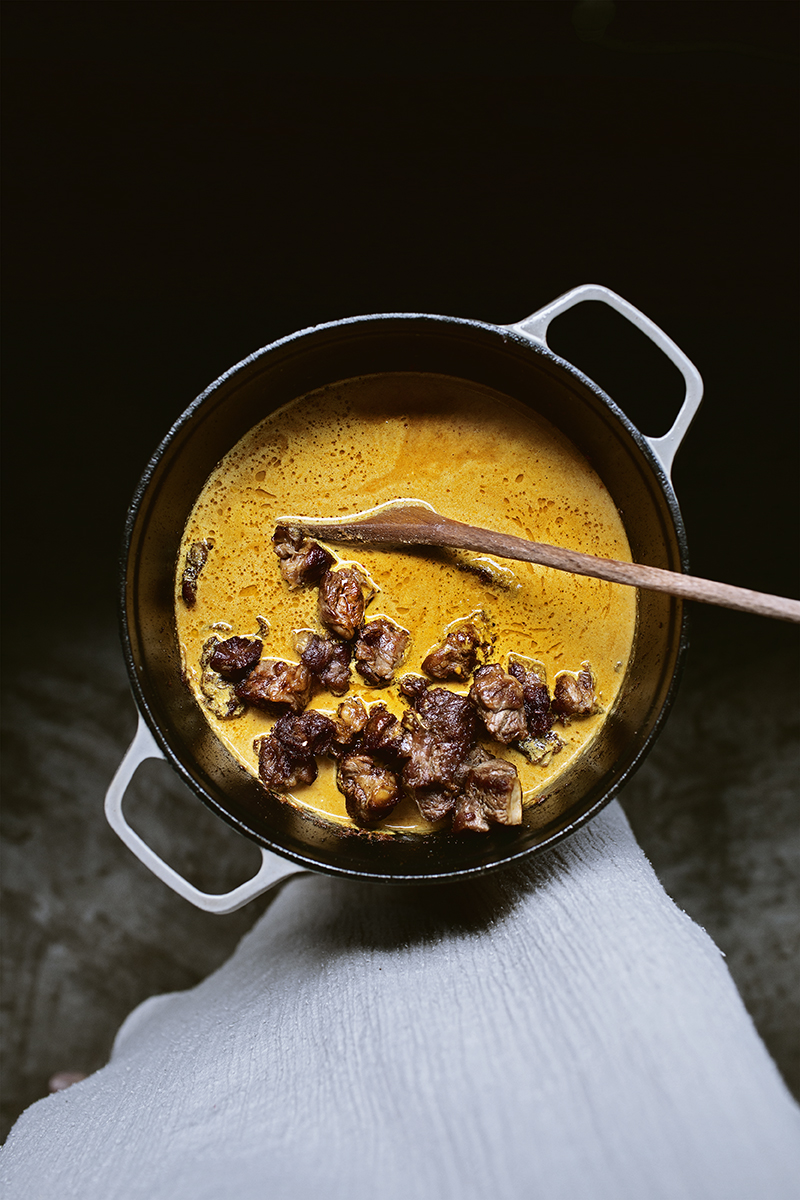

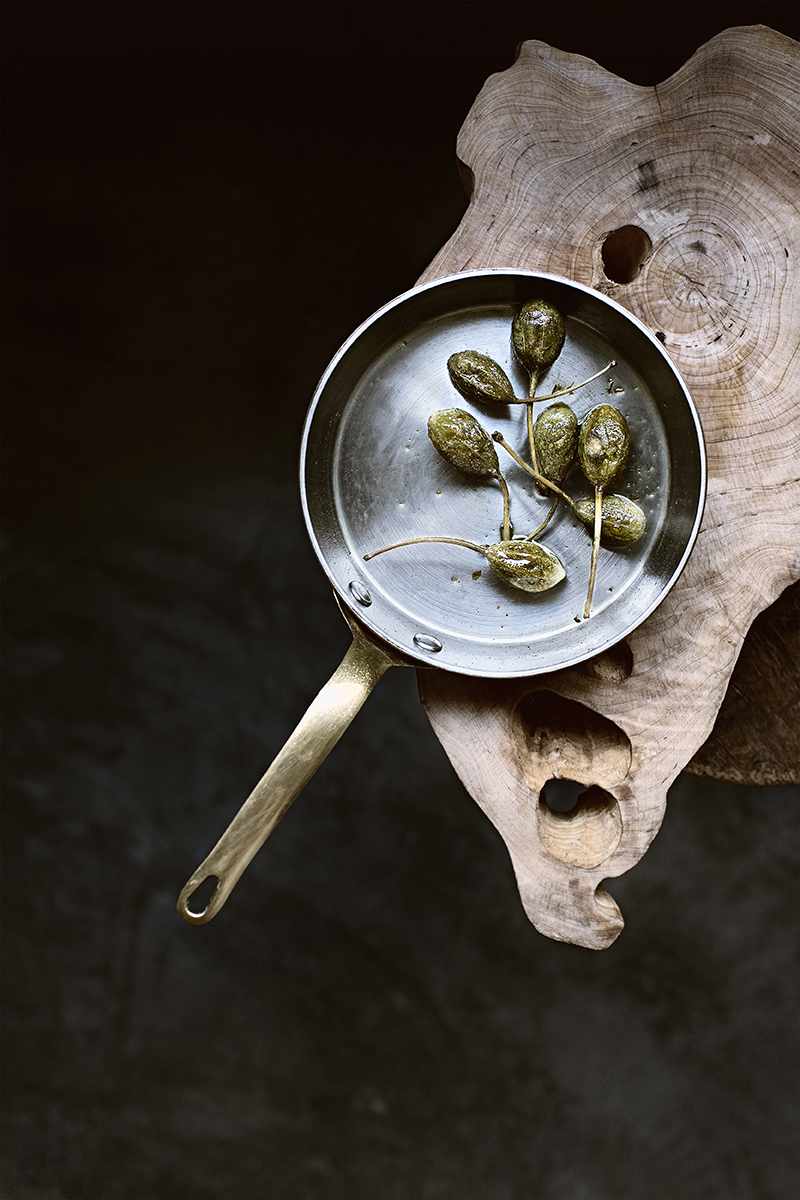
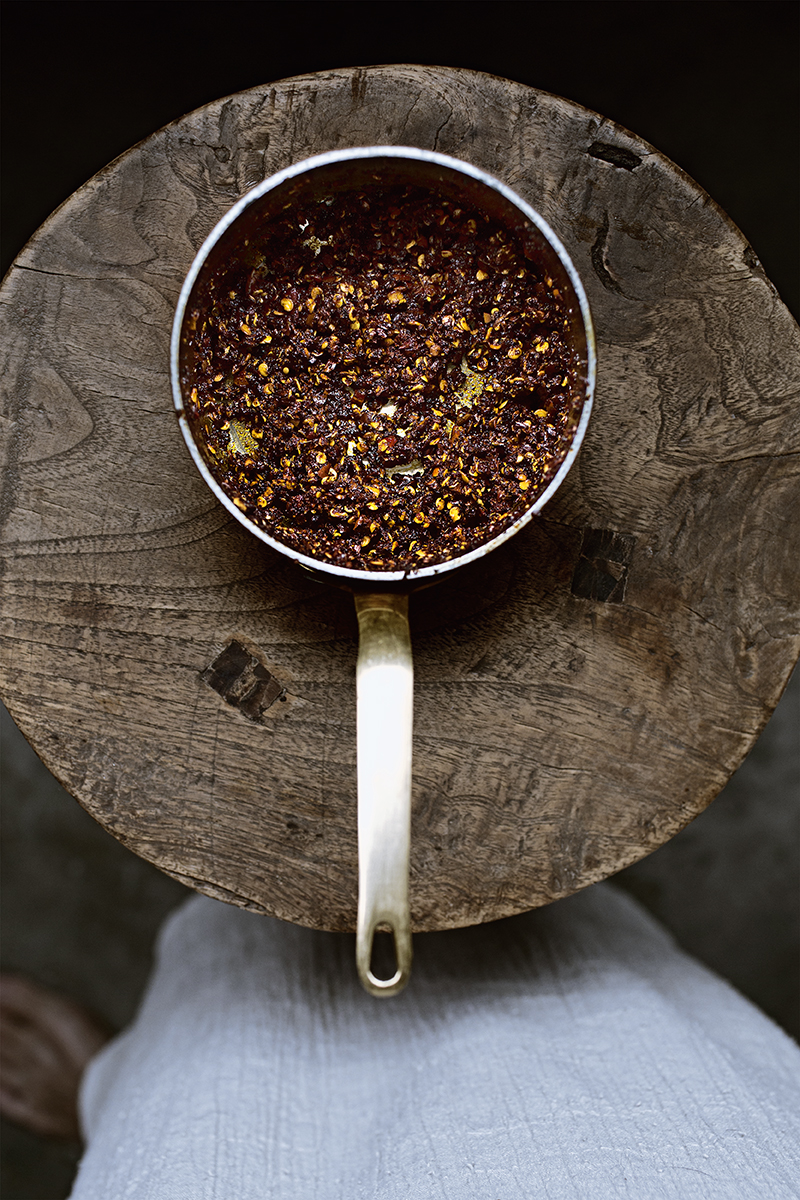


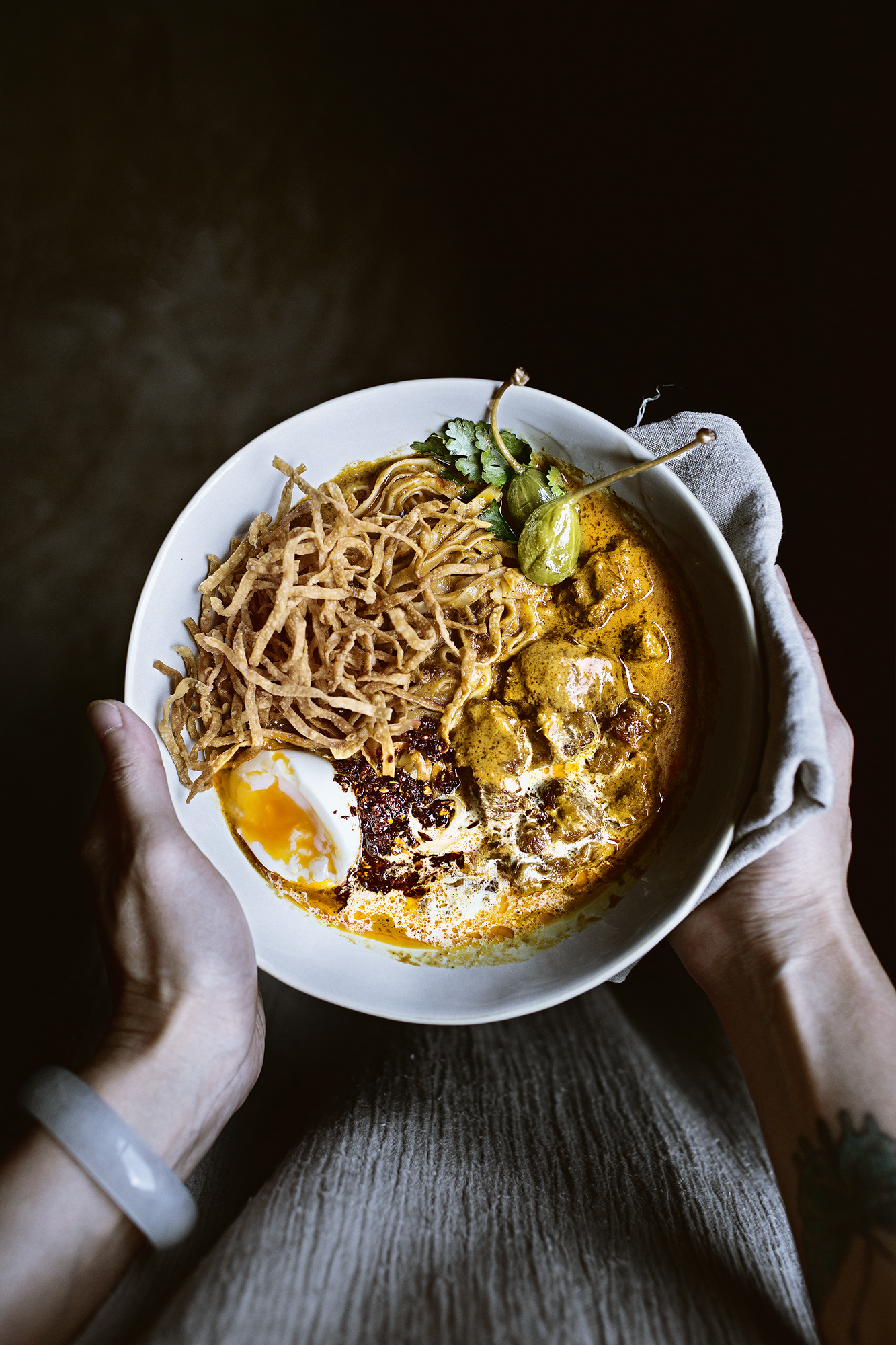
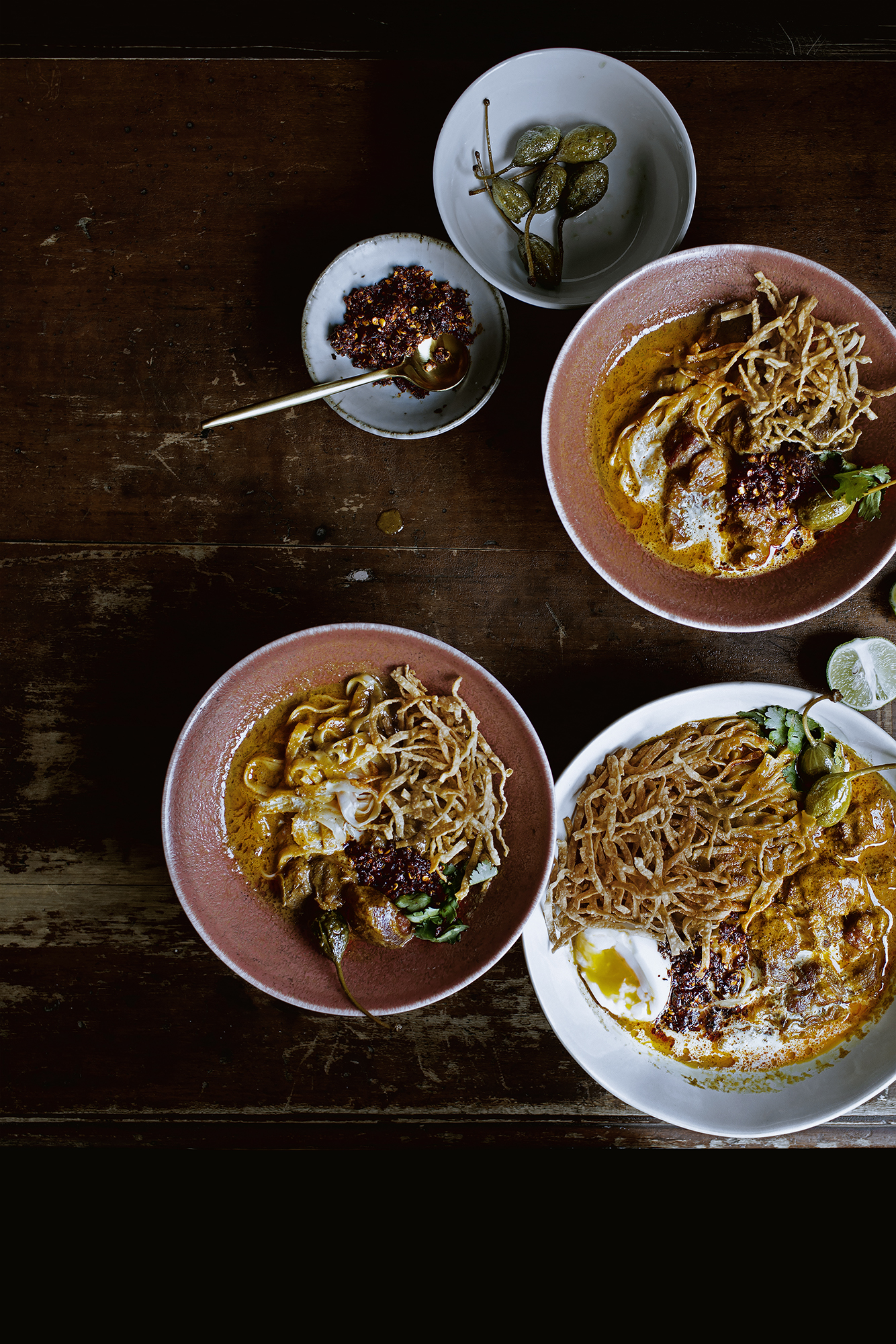
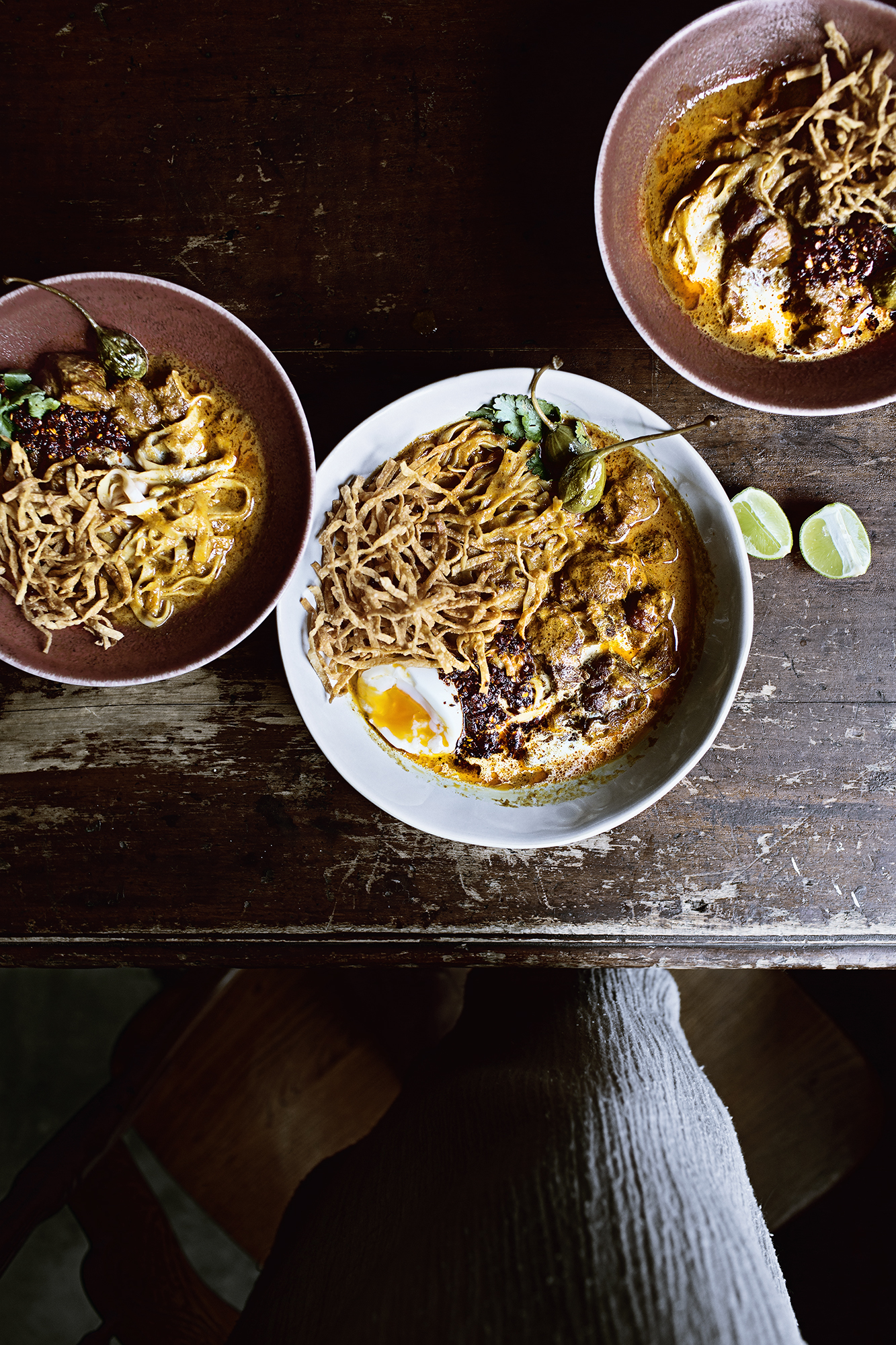
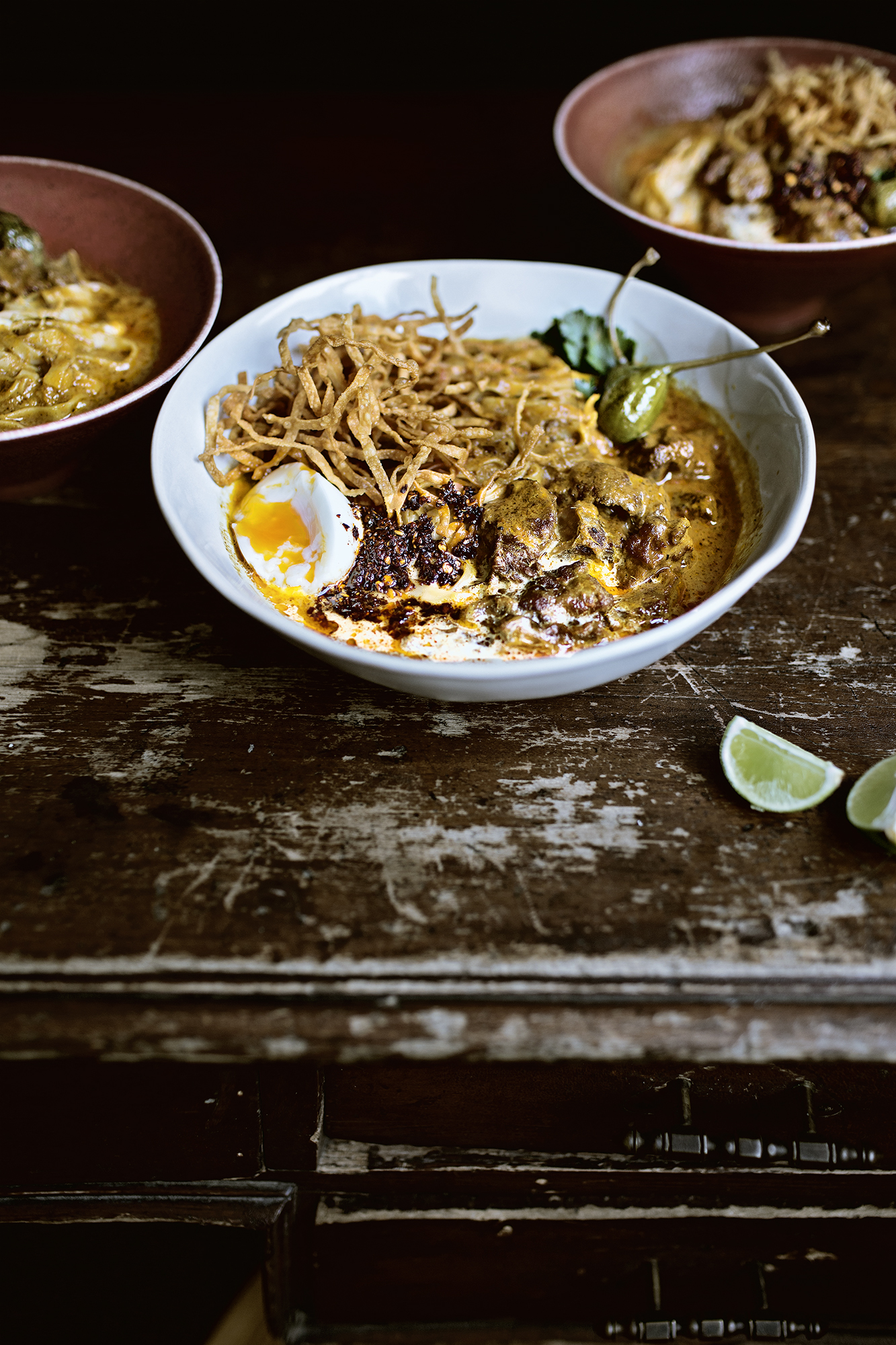
nina
09.05.2018at9:59 PMwith caper berries! brilliant!!
Heidi
09.05.2018at11:27 PMThis is one of my most favorite Thai dishes as well, and I look for it at nearly every Thai restaurant I encounter. I’m so excited to make your recipe for it – the personalized substitutions sound amazing! Cheers!
Emmeline
09.07.2018at2:27 PMThank you thank you thank you! I had this in Chiang Mai years ago but forget what it was called. I do however remember that it was SOO delicious. Now I’m definitely gonna try my hands on my own version!
Pat
09.10.2018at2:01 AMIs there a hard boiled egg in the dish that is not mentioned in the recipe or is it one of the ingredients that resembles but is not an egg? Your site is beautiful and I am always tempted by the recipes. I think I will try this one as I know where I can find all the ingredients that are not now in my fridge or cupboard. Thank you for writing about and photographing dishes to inspire.
mandy@ladyandpups
09.10.2018at12:30 PMPat, hahaa I did add a soft-boiled egg in my bowl, but that’s not a standard khao soi ingredient. If you want, feel free to do so as well :)
Alan Spedding (cumbriafoodie)
09.17.2018at5:49 PMWow……Wow…..and I`ll say that again …..WOW. This looks so wonderful.
I went to Chiang mai to search out the “real deal” and being a total food geek I sampled Kao Soi every day during my visit in the best Kao soi restaurants in the city. Ive made it several times at home but never managed to re-create the genuine flavour. I put that down to a never ending big pot of Mother stock constantly on the simmer.
Anyways , I shall give this version a little whirl and love the curry stock you`ve created. Thanks for sharing this with us.